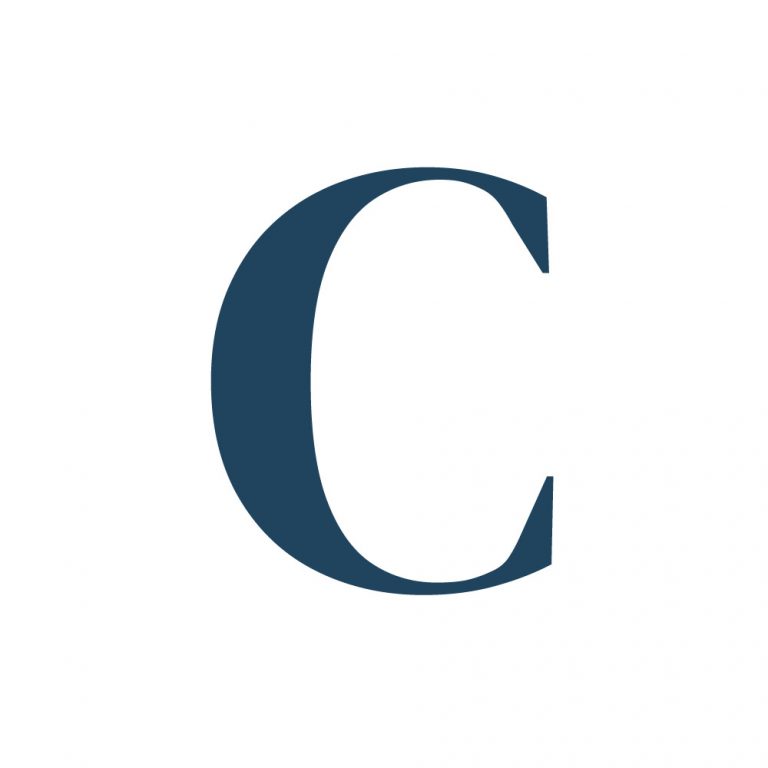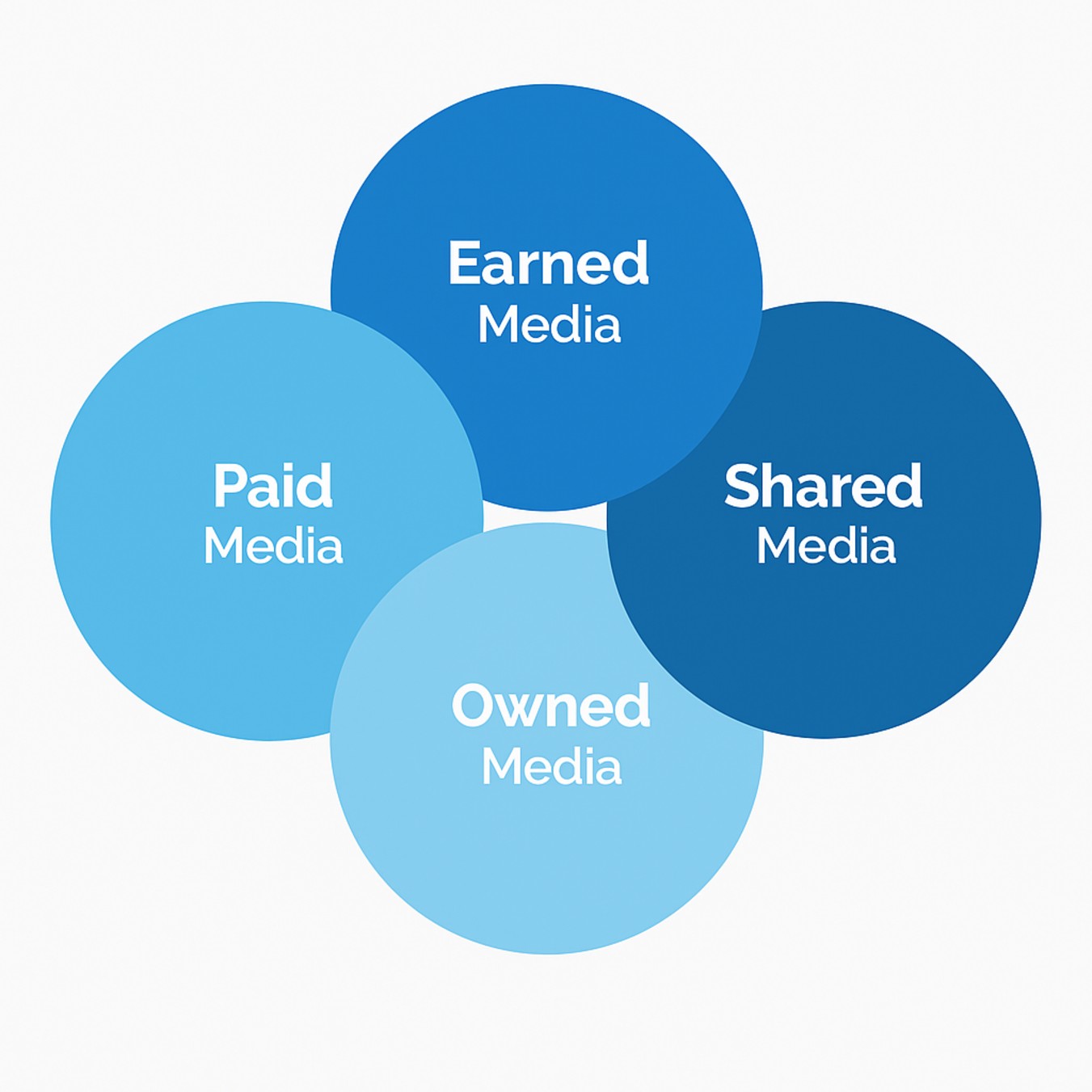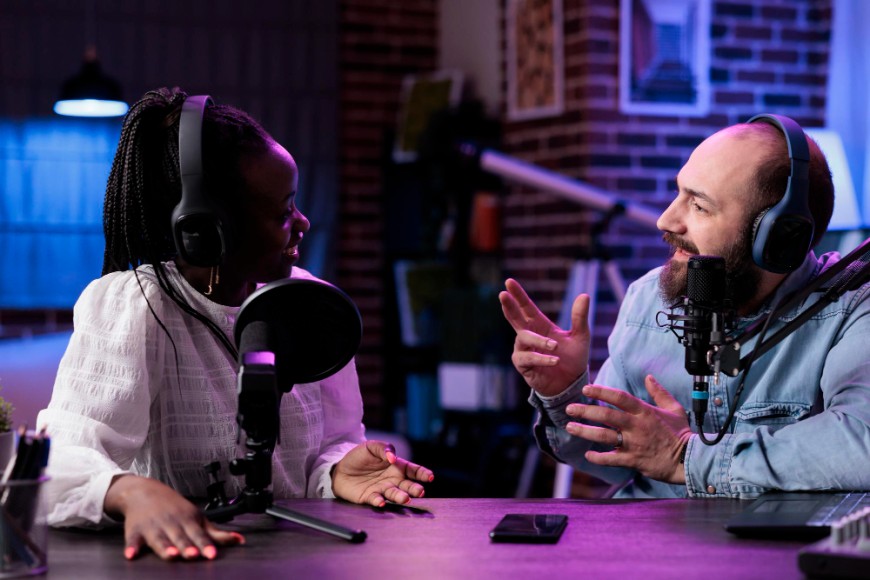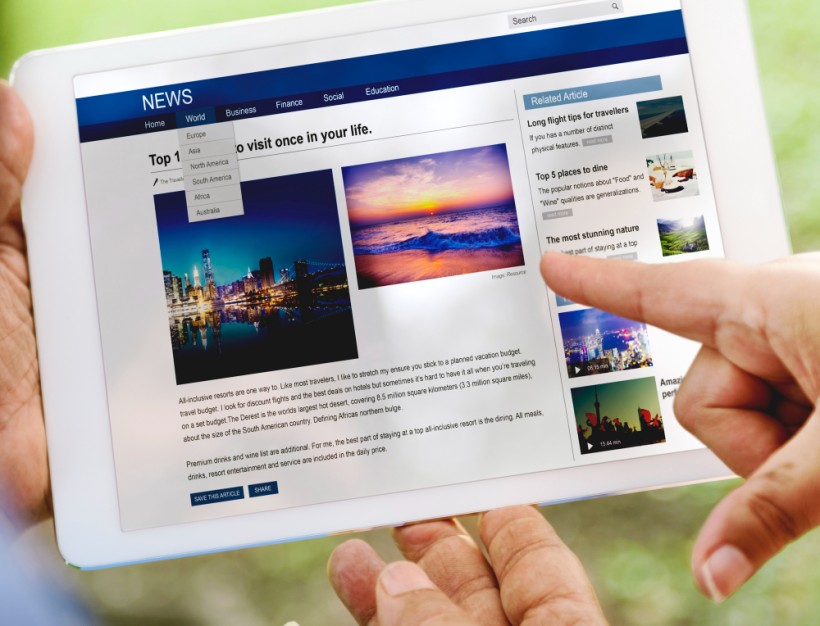The hardest part of communication today isn’t reach, it’s coherence. Brands can show up everywhere and still struggle to tell a clear, connected story.
Marketing teams are creating content across countless platforms, but without a framework to tie it all together, their messages scatter. That’s where the PESO model, created by Gini Dietrich, comes in.
What is the PESO Model?
The PESO model is a framework for organizing media and communication strategies into four categories:
- Paid: Media you pay to promote.
- Earned: Media you gain through coverage, credibility, or influence.
- Shared: Media distributed by your community or audience.
- Owned: Media you create and control.
This model emerged as traditional PR and marketing channels began to blur. Audiences were fragmenting, and brands needed a more connected way to plan and measure their efforts.
What makes PESO valuable isn’t just its clear categories, but how those categories work together. Integration is the point.
Owned media tells your story. Earned media validates it. Paid media amplifies it. Shared media extends it.
Each part of the PESO model plays a distinct role in building a cohesive strategy. Understanding how they work individually is the first step to seeing how they work together.
Paid Media
Paid media is content or placements you pay for. This includes digital ads, boosted social posts, influencer partnerships, sponsored content, and programmatic campaigns.
Its biggest strength is control. You decide the message, targeting, timing, and spend. Paid media gives brands the power to quickly reach new audiences, test messaging, and scale what works.
Nike’s “Dream Crazy” campaign featuring Colin Kaepernick is a good example. It used paid ads across social, TV, and YouTube to spark global conversation, driving both awareness and sales.
But paid media also comes with tradeoffs. Costs can rise quickly, and audiences often trust it less than earned or shared content. Ads are easy to ignore or block, which makes creative quality and relevance critical. And once you stop paying, they stop working.
To get the most from paid, brands need discipline: clear goals, tight targeting, frequent testing, and creative that earns attention. Paid media is your amplifier, but without strong content behind it, you’re just turning up the volume on noise.
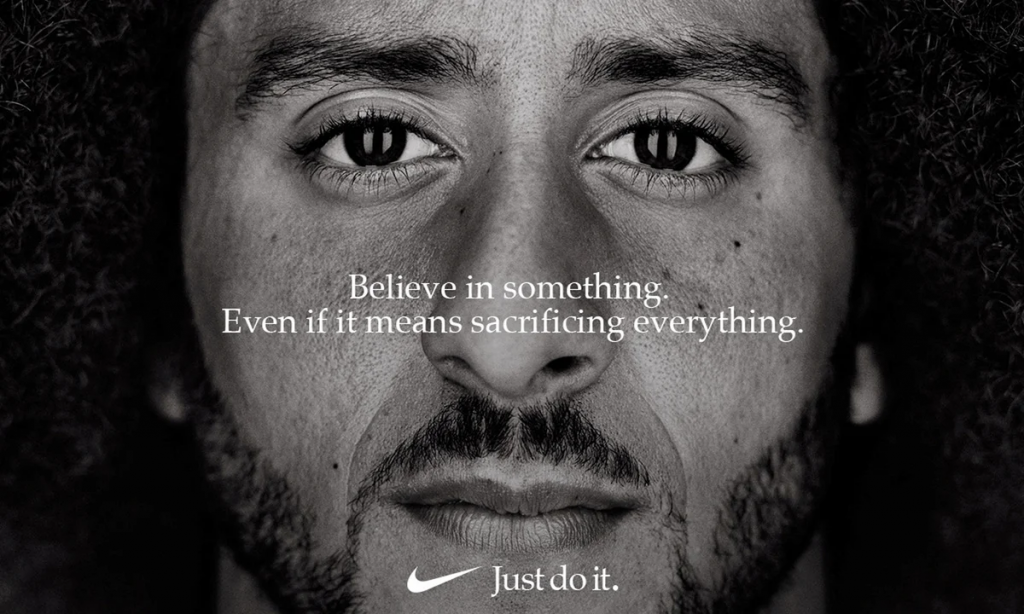
Earned Media
Earned media is the credibility engine. It’s content about your brand that you didn’t pay for or create, things like press coverage, customer reviews, blog mentions, or influencer shoutouts.
You earn this media by being relevant, credible, and newsworthy. It’s the digital version of word-of-mouth, and because it comes from third parties, it tends to carry more trust than paid placements.
Getting earned media isn’t luck, it’s a process. It comes from smart storytelling, strong relationships with journalists and creators, and a willingness to create moments worth talking about.
Airbnb’s Night At campaign did exactly that, inviting people to spend a night in extraordinary places, from a shark tank to the Louvre to the Great Wall of China. Each experience captured global attention, generating widespread press and social coverage.
Earned media validates your authority. It’s harder to control, but when it lands, the impact can be huge.

Shared Media
Shared media is the content that moves through social channels like posts, shares, comments, user-generated content, and anything else that spreads through community engagement.
Its strength lies in authenticity. It’s driven by real people talking about your brand, not just you talking about yourself. Coca-Cola’s #ShareACoke campaign showed how powerful that can be. By inviting customers to find bottles with their names and share photos, the brand turned consumers into marketers and reversed years of declining sales.
The tradeoff is control. Communities can elevate your message or dismantle it just as fast. Shared media works best when brands listen, engage, and participate in conversations rather than just publish and disappear.
Shared media multiplies your message, but only if you make it easy and worthwhile for people to share.

Owned Media
Owned media is any content you fully control like your website, blog, newsletter, podcast, white papers, webinars, and long-form guides like this one.
This is where your brand lives. It’s the most reliable asset you have, not necessarily subject to algorithms or ad budgets. Done well, owned media becomes your knowledge base, sales enablement engine, and central content hub.
Red Bull is a prime example: the company has built a full-scale media operation through videos, magazines, and events that perfectly reflect its brand identity.
Owned media also strengthens every other PESO pillar. PR teams pitch stories rooted in blog content. Ads drive traffic to landing pages. Social followers engage with newsletters and podcasts. Each channel reinforces the next.
Owned media tells your story your way, but it takes long-term commitment, a clear strategy, and ongoing optimization to keep it working. Learn more about this channel in our white paper on owned media.
Integrating the Four Media Types
The real strength of the PESO model shows when all four media types work together in one coordinated campaign. Here’s what that might look like in practice.
Imagine you’re launching a new B2B SaaS platform designed for HR teams.
You start with owned content that defines the story. A long-form blog post explains a pressing industry trend your product helps address — say, hybrid work management or employee engagement tracking. Alongside it, you create a downloadable guide with practical insights and a landing page with a clear call to action. This becomes the campaign’s core, the hub every other effort connects back to.
Next, you use paid media to drive targeted traffic to that hub. LinkedIn ads reach HR professionals by title, company size, and industry. Google or Meta Ads capture intent from people searching for related challenges. A short paid video ad highlights a key insight from your guide, linking directly to the landing page.
With momentum building, your PR team pitches a story to trade publications about how HR leaders are adapting to new workplace dynamics, and how your company’s data offers a window into that shift. A publication like HR Executive runs a feature quoting your CEO and referencing your guide. That earned coverage sends authority back to your owned content, giving it credibility and reach you couldn’t buy outright.
Finally, you spark conversation on social channels. Early adopters post about their experience using your product. You reshare their posts, comment to keep the discussion going, and create a short clip summarizing insights from the HR Executive article. You also post a poll asking HR professionals about their own hybrid work challenges, pulling those responses into future content.
Each piece fuels the next: paid drives discovery, owned educates, earned builds trust, and shared sustains momentum. When those parts work together, results compound.
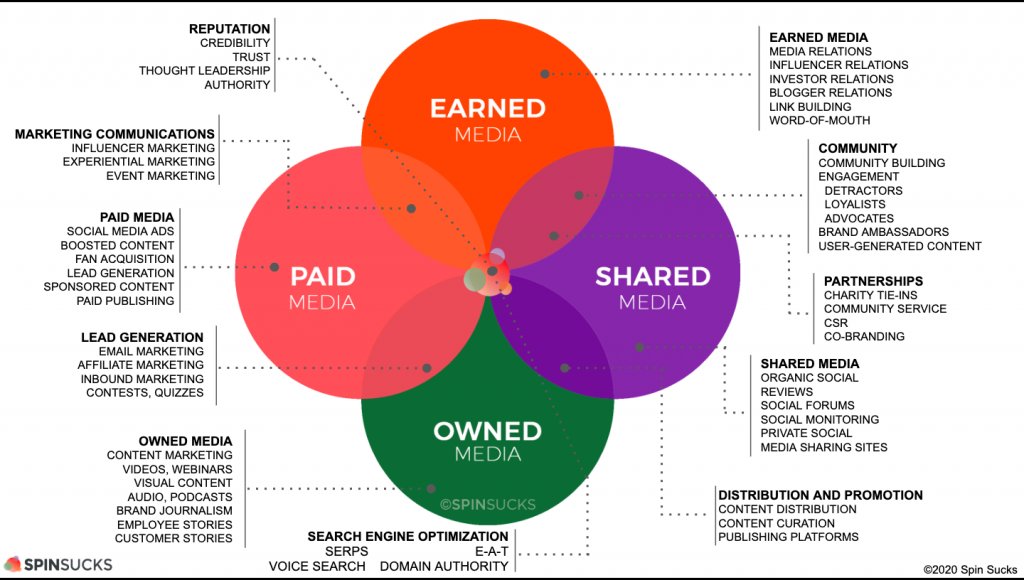
Measuring Success
Measuring the impact of a PESO strategy starts with connecting your metrics to real business outcomes. Each media type plays a different role, so the way you measure should reflect that. Here’s how:
Paid: Track metrics that show efficiency and conversion, such as cost per lead, click-through rate, impressions, and return on ad spend (ROAS). For instance, if you’re running LinkedIn Ads to promote a new eBook, measure not only how many qualified leads download it, but how many of those leads move further down the funnel.
Earned: Use media monitoring tools to track press mentions, backlinks, and share of voice within your industry. Tools like Muck Rack or Cision can help you see how coverage aligns with spikes in web traffic, branded search, or inbound inquiries.
Shared: Look beyond vanity metrics like likes or impressions. Focus on engagement rates (shares, comments, DMs), branded hashtag growth (if you use one), and referral traffic from social platforms. If user-generated posts or community conversations are sending new visitors to your site, that’s measurable amplification.
Owned: Use analytics to measure how well your content performs and contributes to the buyer journey. Track bounce rate, time on page, SEO rankings, lead submissions, and email engagement. Owned channels often deliver quieter wins, like reducing support tickets by answering common questions, that still create real business value.
Integrated reporting tools like Google Analytics, HubSpot, Brandwatch, and Sprout Social can help bring these data points together. But the question to keep asking is simple: Did this move the business forward? Measuring PR impact isn’t easy, but necessary to determine ROI and continuity.
Great Communication Is Built, Not Random
The PESO model shows that strong communication comes from connection, not just volume. When paid, earned, shared, and owned media work together, every channel reinforces the same story.
Coherence is what cuts through noise. Aligning your efforts around a clear message will build trust, consistency, and results that last for your brand.
If your brand is ready to bring focus and consistency to its communication, Column can help. We work with B2B and tech teams to turn complex ideas into clear, connected strategies that drive growth. Learn more today.

Johnson is a Content Strategist at Column. He helps brands craft content that drives visibility and results. He studied Economics at the University of Ibadan and brings over years of experience in direct response marketing, combining strategy, creativity, and data-backed thinking.
Connect with him on LinkedIn.

